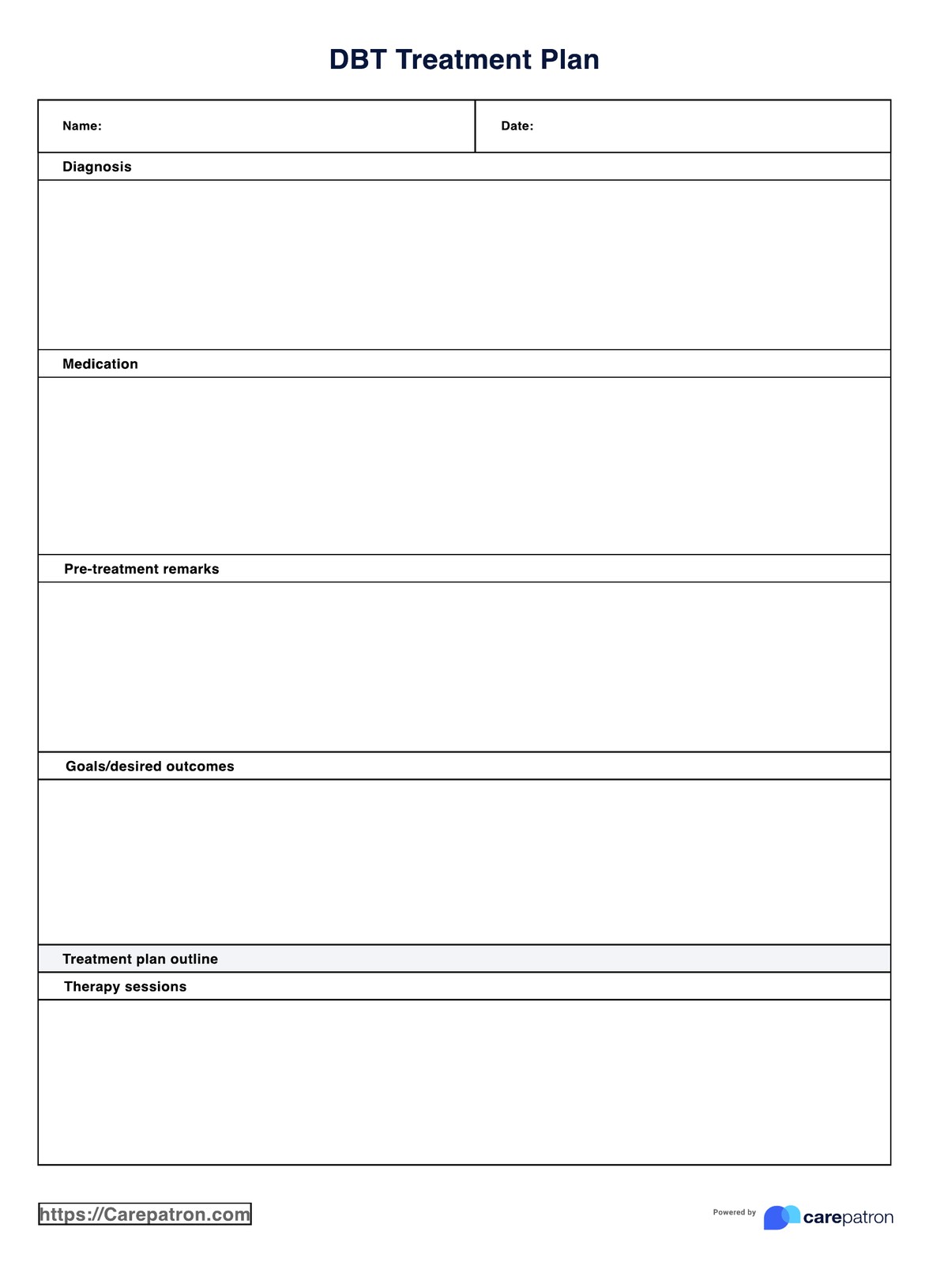Dialectical Behavior Therapy (DBT) treatment is typically divided into four stages. The first stage focuses on achieving behavioral control and stabilizing the client's life, addressing any life-threatening behaviors or behaviors that interfere with therapy. The second stage aims to reduce post-traumatic stress and other disorders that may be present. The third stage helps the client achieve a life worth living by building a life worth living and addressing any remaining problems. The fourth and final stage focuses on further enhancing the client's quality of life and continued growth and development.

DBT Treatment Plan
Dialectical Behavior Therapy (DBT) helps patients better manage their thoughts, emotions, and behaviors. Get access to our free DBT treatment plan template to get started.
DBT Treatment Plan Template
Commonly asked questions
Dialectical Behavior Therapy (DBT) utilizes a variety of interventions to help clients develop skills and achieve their treatment goals. Some common DBT interventions include mindfulness exercises, emotion regulation techniques, distress tolerance strategies, and interpersonal effectiveness training. DBT therapists also employ behavioral analysis, validation, and problem-solving approaches.
The primary treatment goal of Dialectical Behavior Therapy (DBT) is to help clients build a life worth living. A DBT program typically involves reducing life-threatening and therapy-interfering behaviors, improving emotion regulation skills and distress tolerance, and enhancing interpersonal effectiveness and quality of life.
EHR and practice management software
Get started for free
*No credit card required
Free
$0/usd
Unlimited clients
Telehealth
1GB of storage
Client portal text
Automated billing and online payments











